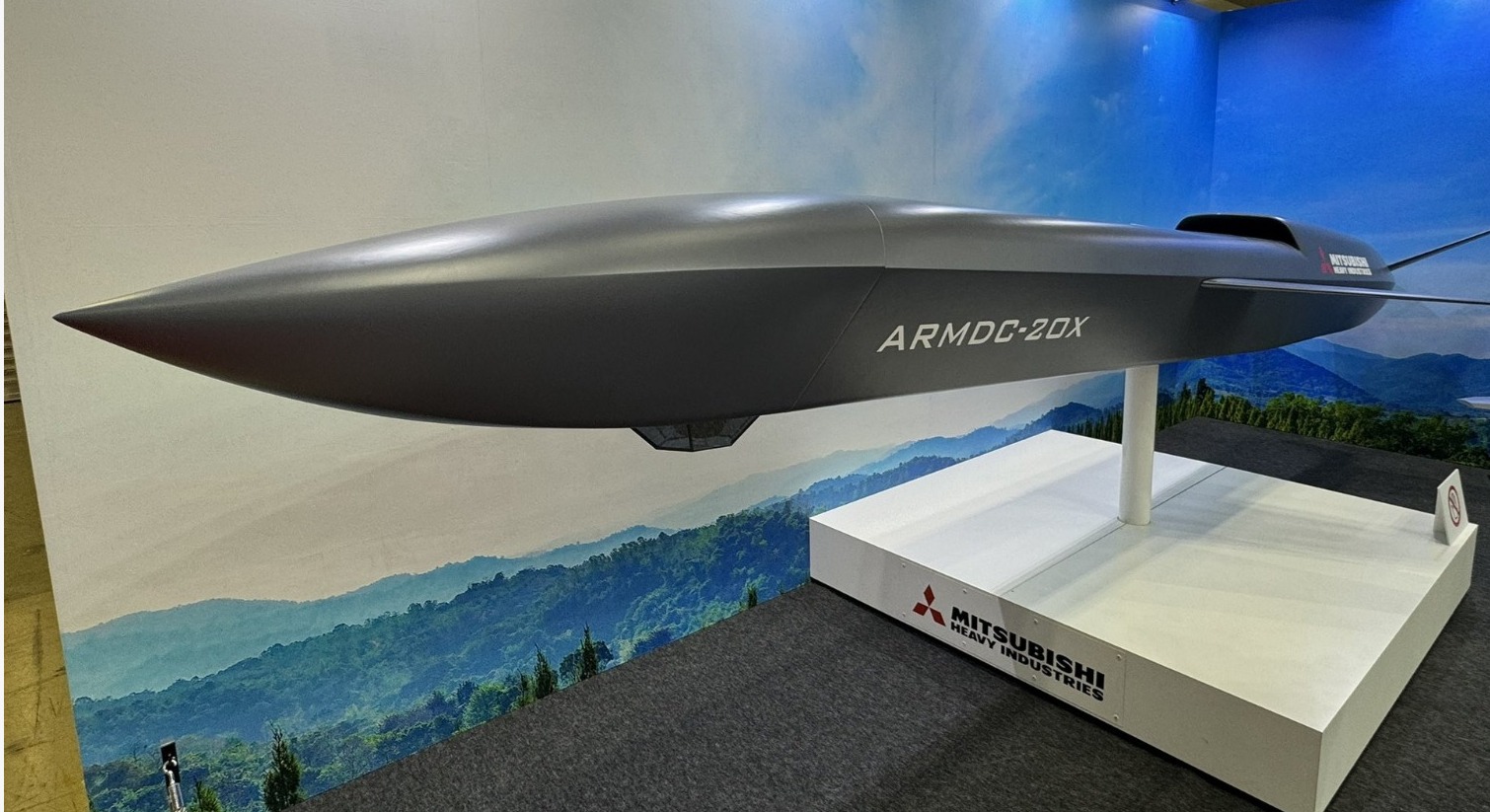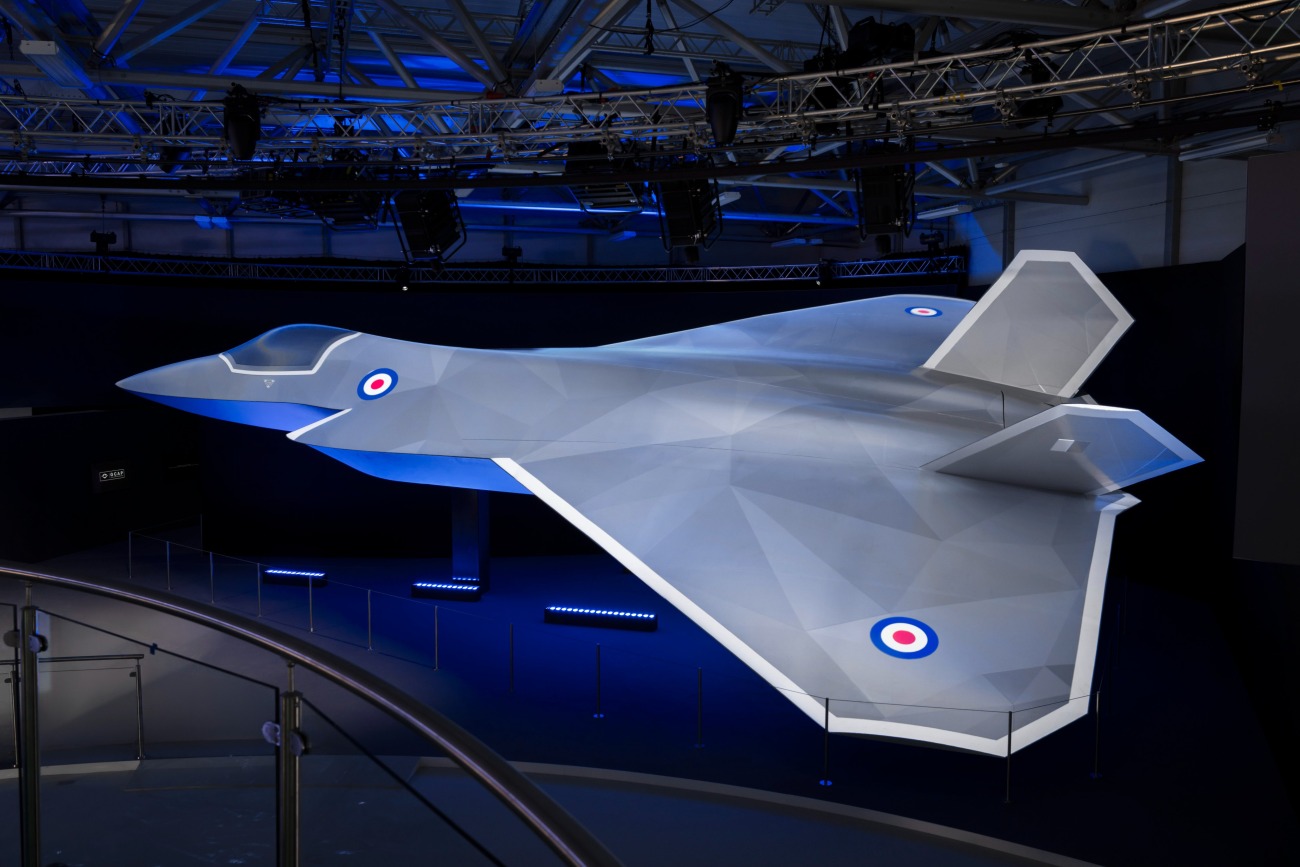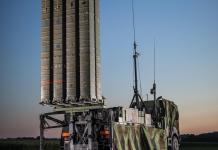As the Global Combat Air Program (GCAP) moves forward, Japanese defense contractor Mitsubishi Heavy Industries (MHI) has unveiled concept designs for Collaborative Combat Aircraft (CCA) that will be used in conjunction with Japan’s next-generation fighter jet.
Under the GCAP, Japan, Italy, and the UK are working on a next-generation fighter aircraft. MHI is the lead system integrator in the GCAP along with BAE Systems from the United Kingdom and Leonardo from Italy.
The envisioned combat air system will consist of a manned fighter aircraft complemented by unmanned “adjuncts,” such as drones, alongside advanced sensors and interconnected data systems driven by Artificial Intelligence (AI).
The concept designs, developed as part of MHI’s AI-enabled Collaborative Combat Aircraft (CCA) concept, were unveiled by the contractor at the International Aerospace Exhibition 2024 held at Tokyo Big Sight in Ariake. MHI unveiled two different models: an ‘expendable ISR variant’ and a ‘tactical combat variant.’
For the first time, MHI displayed a full-size mock-up of ‘ARMDC-20X,’ an expendable platform designed for intelligence, surveillance, and reconnaissance (ISR).
This variant would be responsible for detecting, identifying, and communicating threats to the crewed next-generation aircraft. Additionally, at the exhibition, MHI unveiled a 1:10-scale model of a tactical combat CCA featuring an internal payload compartment.
The unveiling of these loyal wingman drones comes as the concept of manned-unmanned teaming between fighter jets piloted by humans and remotely piloted autonomous aircraft has gained global traction.
Although the development of these AI-driven unmanned systems is still in a nascent stage, Mitsubishi also created a video that drew the most attention at the show and provided a sneak peek into the concept.

The video showed two CCAs operating with next-generation crewed fighters, which is eerily similar to the Global Air Combat Programme (GCAP) concept.
As the video progresses, an unmanned aircraft detects a “threat aircraft”—a Chinese J-20-like platform. Immediately after detection, the CCA relays information to the manned fighter through the data link. The fighter then directs the combat CCA to destroy the hostile aircraft using an air-to-air missile fired from its internal weapons bay.
The video is particularly intriguing as it shows the Japanese CCA detecting a J-20 Mighty Dragon, which is a fifth-generation Chinese stealth aircraft, the mainstay of the People’s Liberation Army Air Force (PLAAF).
When asked what this meant, a PLA watcher and expert who did not want to be named told EurAsian Times: “CCAs are meant to augment situational awareness (among other enhancements) to a friendly force, through distributed sensors and networking. The idea of having superior situational awareness isn’t a huge surprise, and depicting it in the form of detecting and firing against an enemy stealth aircraft is something that’s been done in lots of nation’s concept arts.”
The development comes as Japan is enhancing its military capability to combat an enhanced security threat from China. It is believed that the development of next-generation combat aircraft is also part of a larger effort to leverage novel technology to counter-balance air power dynamics in the region, especially since Japan believes that it could eventually get dragged into a conflict in the Indo-Pacific.
MHI officials reportedly told the media that although drone development is not covered by the trilateral GCAP agreement, both of these CCA systems are being designed with GCAP in mind. They will have modular equipment that can be fitted according to mission requirements, an open architecture, and easily upgradable AI-based technologies.
Mitsubishi said that the loyal wingman drone models on exhibit in Japan currently are not the final design as the CCA project is still in its conceptual stage. However, MHI anticipates that by 2035, when the first GCAP aircraft goes into service, a fully functional version of these autonomous systems will be available.
A test bed-based demonstration flight is scheduled for next year, and the company announced that it has already secured a government contract to further develop and improve its AI capabilities tailored for drones.
Japan has long explored the development of loyal wingman drones. In January this year, media reports indicated that Japan may join the United States’ Collaborative Combat Aircraft (CCA) program.
At the time, the US Secretary of the Air Force, Frank Kendall, expressed the readiness of the United States to collaborate with Japan on developing autonomous aircraft driven by artificial intelligence for the Air Force.
GCAP Is Right On Track & Gathering Pace
The unveiling of CCA by MHI comes months after the three GCAP partner countries, Japan, the UK, and Italy, showcased the new concept model of their upcoming combat aircraft at the ongoing Farnborough International Airshow in July this year.
The concept airframe appeared to be massive, as observed by several military watchers who said it was an absolute beast of an aircraft.
GCAP’s goal is to supply a next-generation, twin-engine fighter jet to replace the outdated F-2 fighters of the Air Self-Defense Force and the Eurofighters built in Britain and Italy. The aircraft is expected to enter service by 2035, after which it will be set up for export to friendly countries.
The government and commercial partners of GCAP are currently working to complete agreements to facilitate the launch of the industrial structures that will satisfy the aircraft’s overall capability requirements.
An international treaty that permits the establishment of a transitional government organization to oversee the Global Combat Air Program’s development is nearing finalization. This needs to be in place before the project can move on to the next stage — the full design phase — next year.

The GCAP-developed next-generation fighter is also expected to serve as a flying command center that can coordinate and direct other, probably autonomous, forces. It is believed that this aircraft would serve as “the centerpiece of a wider combat air system that will function across multiple domains.”
This has set into motion the development of the CCA in Japan, represented by Mitsubishi and the other two partners. BAE System (representing the UK) and Leonardo (representing Italy) also displayed their uncrewed platforms at the airshow.
Multiple analysts have noted that the envisioned role of Collaborative Combat Aircraft accompanying manned fighters on scrambles holds the potential to extend sensor range and, consequently, reduce the number of fighters needed to support air superiority missions over time.
This collaborative approach aligns with Tokyo’s broader goal of enhancing efficiency and effectiveness in countering Chinese military threats in the region as Beijing continues to become more assertive.
- Contact the author at sakshi.tiwari9555(at)gmail.com
- Follow EurAsian Times on Google News




